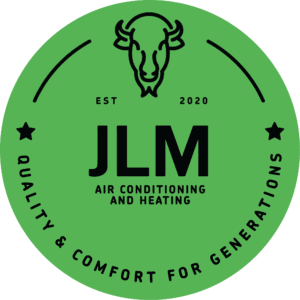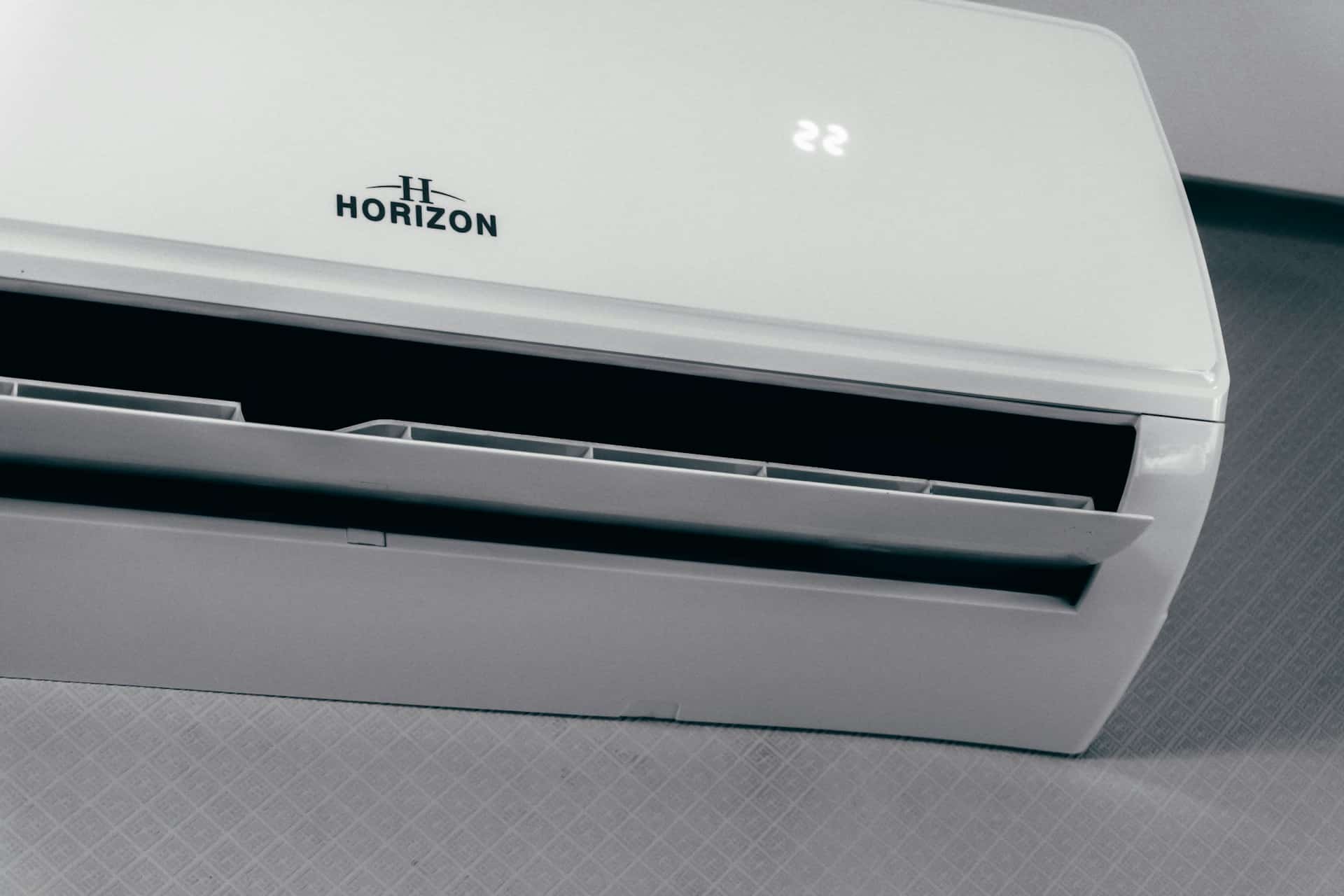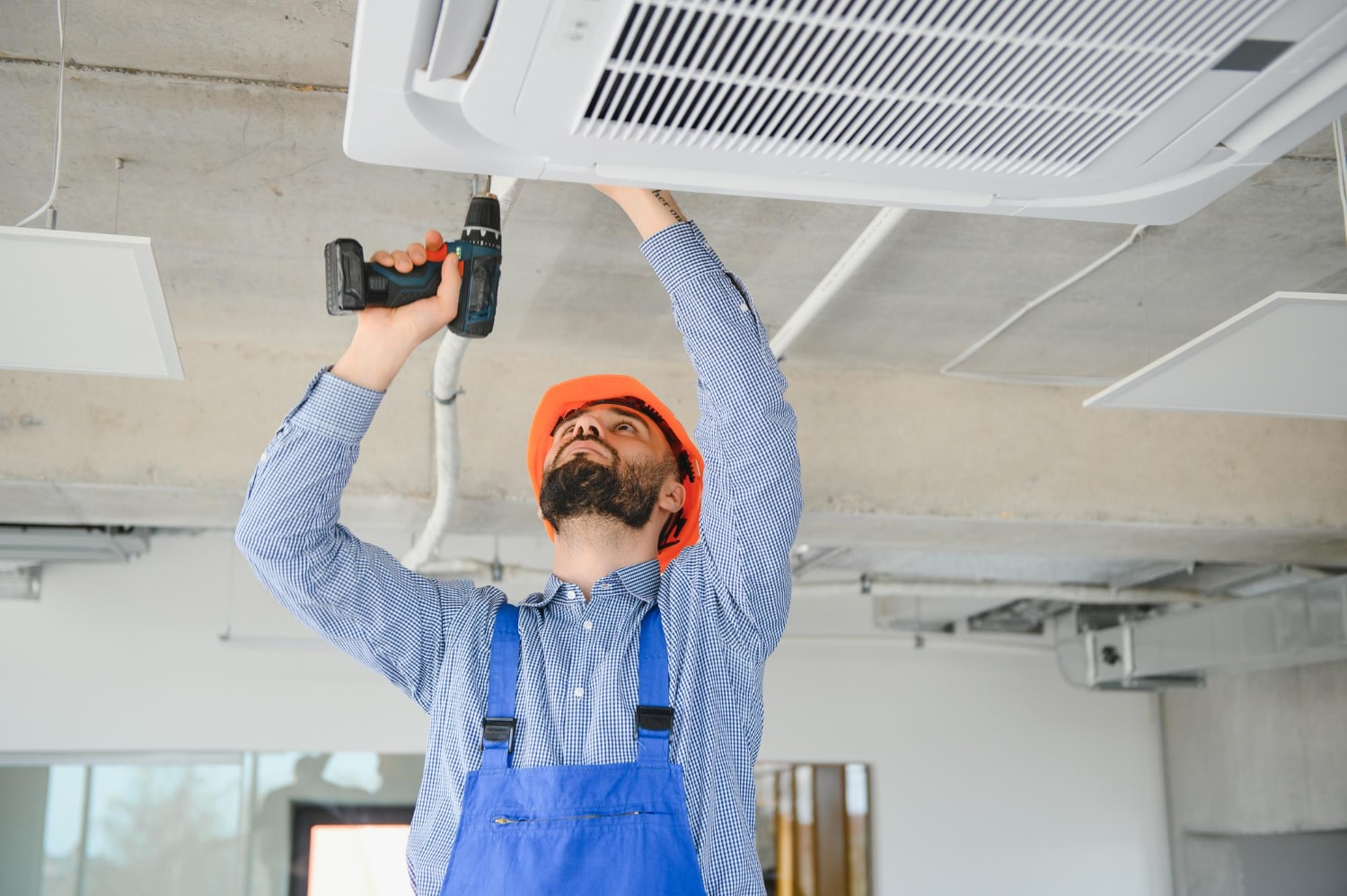Ever wonder what really goes on inside that big metal box outside your house? Or why the vents in your ceiling blow warm air in winter and cool air in summer—like magic? Well, it’s not magic. It’s your HVAC system, and it works hard all year long to keep you and your family comfortable. But here’s the thing: the HVAC system is more than just a thermostat and an AC unit. It’s an entire network of heating, ventilation, and cooling parts working together in the background. And once you understand the major components of an HVAC system, you’ll be better equipped to maintain it, troubleshoot problems, and even save money on energy bills.
What Is an HVAC System?
Now, before understanding all about the parts of HVAC, we need to know what exactly is a HVAC system is. HVAC stands for Heating, Ventilation, and Air Conditioning. It refers to a complete system of technologies and equipment designed to regulate indoor temperature, airflow, and air quality. An HVAC system plays a crucial role in maintaining a comfortable, safe, and healthy environment in homes, offices, and other buildings. A typical home HVAC system may include a furnace, air conditioner, heat pump, ductwork, air filters, humidifier, and thermostat.
Main Functions of an HVAC System
- Heating – Keeps indoor spaces warm during cold months using a furnace, boiler, or heat pump. It distributes heat through radiators, floor heating, or ducted air.
- Cooling – Provides relief during hot seasons by removing heat from indoor air. Central air conditioners and heat pumps are commonly used to cool rooms efficiently.
- Ventilation – Maintains airflow and ensures fresh air circulates indoors. It removes stale air, odors, smoke, and pollutants while bringing in clean outdoor air.
- Humidity Control – Helps regulate moisture levels in the air. Proper humidity levels prevent mold growth, reduce allergens, and improve overall comfort and health.
An efficient HVAC system not only enhances comfort but also promotes better energy use and improved indoor air quality.
Primary Categories of HVAC System Components
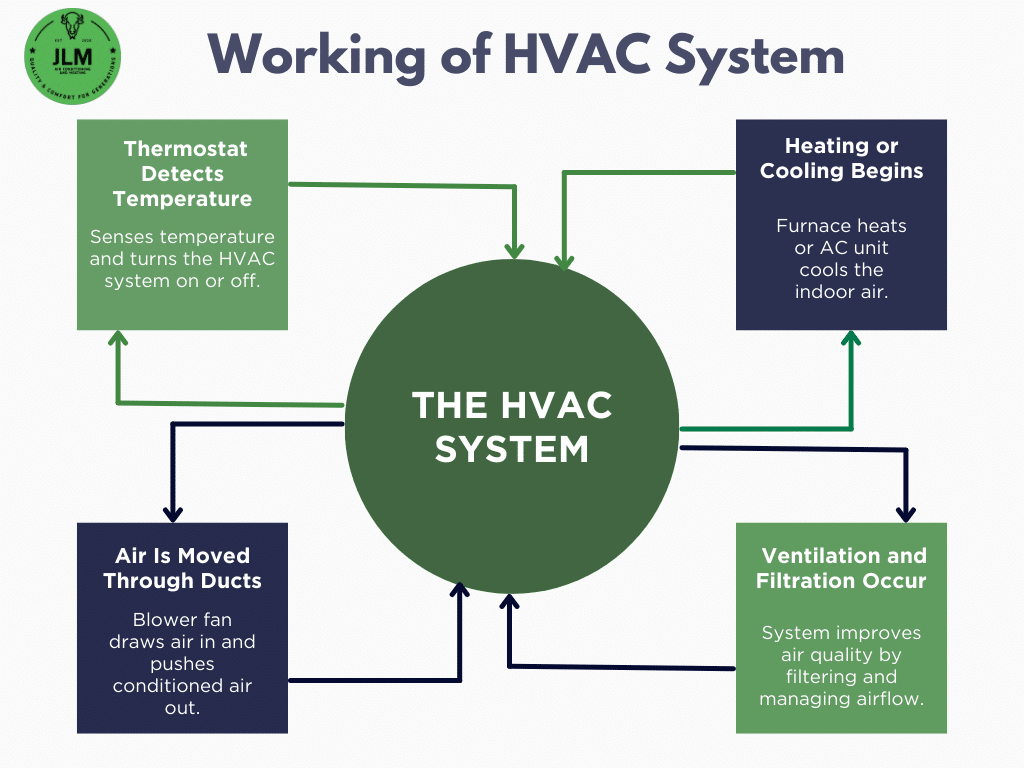
An HVAC system is made up of various components of an air system that work together to manage temperature, airflow, and air quality. These systems are typically divided into three main categories, each responsible for a different aspect of heating and cooling your space. Understanding the function of each group can help you maintain your indoor air comfort and protect against potential hazards like carbon monoxide. Whether you’re troubleshooting an AC unit, replacing an outdoor unit, or learning how your cooling systems function, knowing the role of each component is essential. The three main categories of HVAC system components include:
- Heating System Components
- Cooling System Components
- Ventilation System Components
Let’s explore each category in more detail to understand how they work together—from the evaporator coil and liquid refrigerant in the cooling process to the heat exchanger, combustion chamber, return ducts, and outdoor condenser—to deliver reliable air conditioning and comfort through both the indoor unit and outdoor unit that draws air into your AC system.
Heating System Components: Keeping Your Home Warm
The heating system generates warmth and circulates heated air throughout your home. The major parts of a heating system include the following:
Furnace
- The core of most home heating systems
- Typically located in basements, attics, or utility rooms
- Uses gas, oil, or electricity to produce heat
Heat Exchanger
- Located inside the furnace
- Transfers heat from the combustion process to the air drawn into the system
- Keeps combustion gases separate from breathable indoor air
Combustion Chamber
- Burns fuel to create heat
- Works with the heat exchanger to safely contain and manage flames
Blower Motor and Fan
- Pushes warmed air through return ducts
- Essential for distributing heat to all rooms
🛑 Carbon Monoxide Warning: Improper combustion or a cracked heat exchanger can release dangerous carbon monoxide. Schedule yearly furnace inspections.
Cooling System Components: How AC Units Work
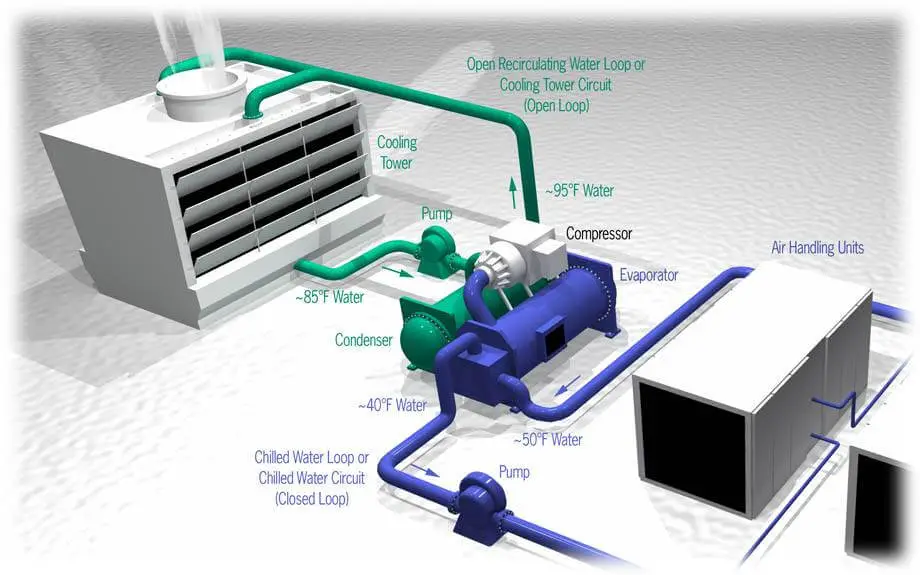
Credit: instrumentationtools.com
Your air conditioner system uses several specialized parts to remove heat from the indoor air and release it outside.
Evaporator Coil
- Located inside the indoor unit
- Absorbs heat from air using liquid refrigerant
- Starts the cooling process
Liquid Refrigerant
- Circulates through the system
- Changes from liquid to gas as it absorbs heat
- Travels between indoor and outdoor units
Compressor
- Located in the outdoor unit
- Pressurizes refrigerant, preparing it for heat release
Outdoor Condenser Unit
- Contains the condenser coil and fan
- Expels absorbed heat into the outdoor environment
Expansion Valve
- Controls the flow of refrigerant into the evaporator coil
- Helps maintain proper cooling efficiency
✅ These components of an AC unit work together to extract heat and cool your home effectively.
Ventilation System Components: Managing Airflow
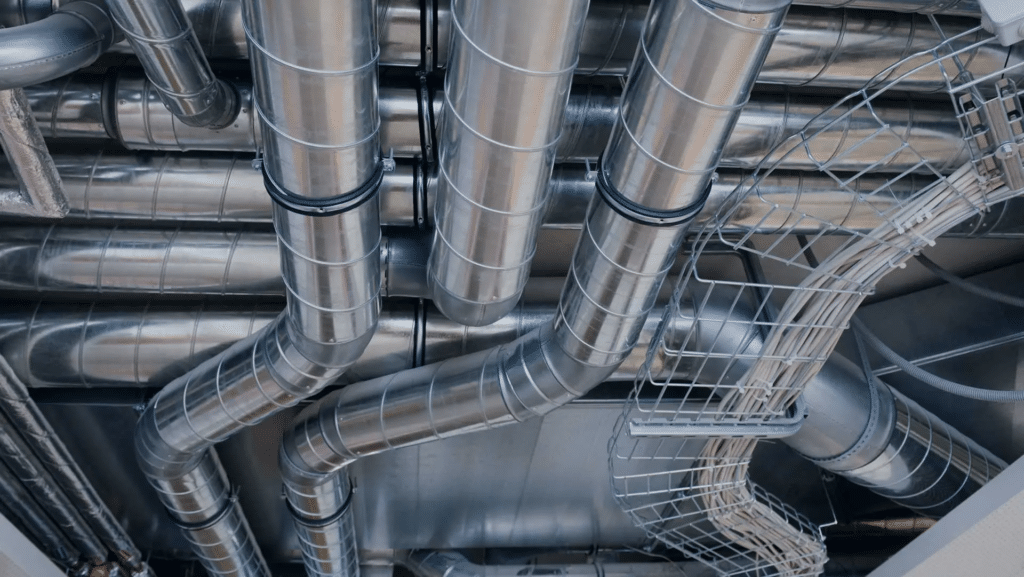
Credit: njea.org
Ventilation is crucial for maintaining fresh indoor air, especially in airtight homes. Proper airflow ensures even heating/cooling and improves air quality.
Air Filters
- Trap dust, allergens, and pollutants
- Should be replaced or cleaned regularly
Return Ducts
- Draws air from the home into the HVAC system
- Helps maintain air circulation and temperature balance
Supply Ducts
- Distribute treated air back into rooms
- Work in tandem with return ducts to complete the airflow cycle
Exhaust Outlets
- Expel stale or contaminated air outdoors
- Critical for systems with combustion elements
Humidifiers and Dehumidifiers
- Optional components of home HVAC systems
- Control moisture levels for better comfort and health
Indoor Unit vs. Outdoor Unit: What’s the Difference?
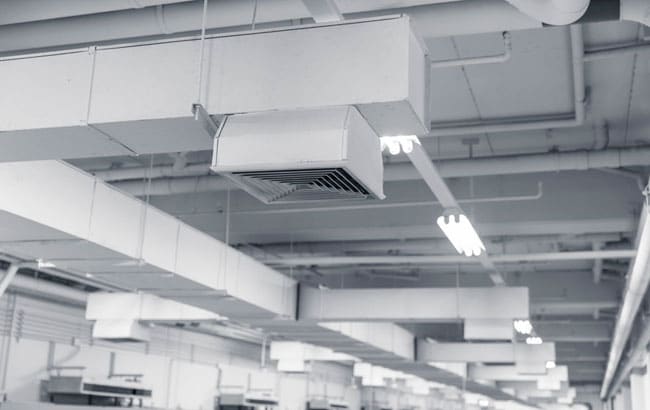
Credit: usawire.com
Most central HVAC systems consist of two main sections: an indoor unit and an outdoor unit. Each houses specific components with distinct roles.
Indoor Unit Includes
Here what an indoor ac unit consist of;
- Evaporator coil
- Blower fan
- Air handler
- Furnace (in some systems)
Outdoor Unit Includes
Let us now look at the elements an outdoor unit has;
- Compressor
- Condenser coil
- Fan
🔧 Maintaining both units is key to keeping your heating and cooling system efficient and long-lasting.
The Thermostat: Command Center of Your HVAC System
Now, what’s the importance of the thermostat in a HVAC system. A thermostat regulates your entire HVAC setup. It tells your system when to turn on, how long to run, and what temperature to maintain.
Types of Thermostats
- Manual – Basic controls
- Programmable – Set schedules for energy savings
- Smart – Wi-Fi enabled, learn habits, and offer remote access
A modern thermostat improves energy use and connects seamlessly with your central air system.
Supporting Components You Should Know

Credit: moncriefair.com
In addition to the core parts, several smaller components of an HVAC system support performance and reliability.
Other important parts
- Drain pan and lines – Manage condensation from cooling
- Dampers – Control airflow through different ducts
- Sensors and relays – Help automate responses in system operation
These may seem minor but are crucial to proper system function.
How These HVAC Systems Parts Work Together?
Here’s a simplified breakdown of how everything works in sync;
- Thermostat detects a change in room temperature.
- It activates either the heating or cooling cycle.
- The blower fan pulls indoor air through return ducts.
- Air passes through filters and over coils to be heated or cooled.
- Treated air is pushed through supply ducts into your home.
- Ventilation components manage air exchange and moisture levels.
🔁 This cycle repeats until the set temperature is reached.
Why Understanding HVAC Components Matters?
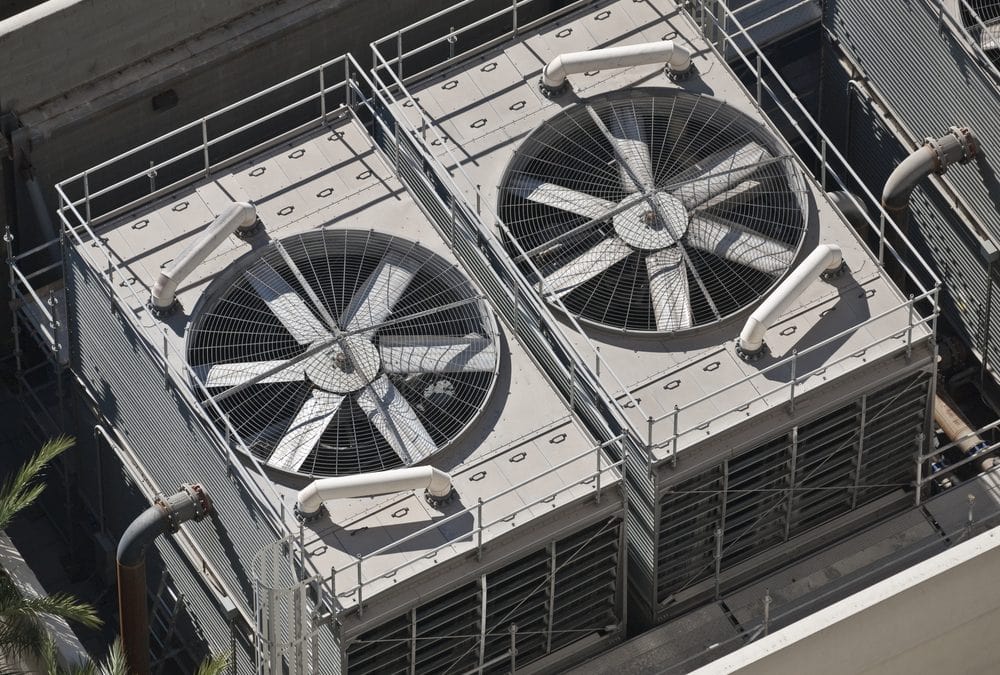
Credit: calmech.net
Knowing the components of an HVAC system gives you several advantages;
- Better maintenance: You can identify dirty filters, clogged ducts, or faulty blowers early.
- Improved efficiency: Clean, well-functioning parts use less energy.
- Safer operation: Early detection of leaks or carbon monoxide hazards can save lives.
- Smarter upgrades: Understand what to replace or upgrade for better performance. Also, if you want to replace or repair your HVAC system, you can always rely on our JLM services for the most amazing experience, ever!
The Bottom Line
So, as we as we wrap up, a well-functioning home HVAC system depends on many interconnected parts—from the heat exchanger to the evaporator coil, from return ducts to the outdoor condenser. Whether you’re dealing with heating and cooling challenges or simply trying to improve indoor air quality, knowing these HVAC system components empowers you to make informed decisions.
By understanding the parts of central air systems and how each component contributes, you can better maintain your home HVAC system and ensure long-term comfort and efficiency.
💡 Regular servicing and filter changes are your first steps toward a healthier, more efficient HVAC system!
UNDERSTAND HEATING & COOLING BETTER! ♨️❄️
